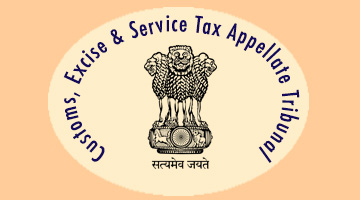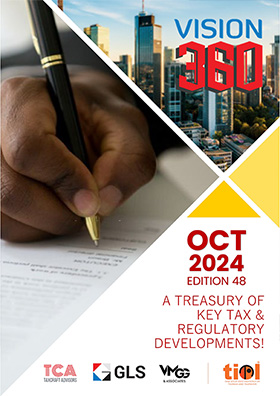ST - CENVAT refund u/r 5 of CCR, 2004 - Relevant date is the end of the quarter in which the FIRC is received: CESTAT LB
By TIOL News Service
BANGALORE, FEB 10, 2018: THE issue before the Larger Bench in the context of refund claim filed under Rule 5 of CCR, 2004 read with Notification No.5/2006 dt. 14/03/2006 as amended by Notification No.27/2012 was -
Whether computation of time limit (u/s 11B of CEA, 1944) should be from the date of FIRC (foreign inward remittance certificate) only or from the end of quarter of export of services?
The requirement for the reference was because -
+ The Bench at Bangalore by Final Order No.21636-21640/2017 dt. 05/04/2017 has held that provisions of Section 11B will be applicable from the date of receipt of payment for export of services, despite there being a condition mentioned for filing of refund claims once in a quarter and held that time period of one year from the end of quarter is inapplicable in view of the judgment of Hon'ble High Court of Madras in the case of CCE Vs. GTN] - 2012-TIOL-369-HC-MAD-CX.
+ The same issue has been decided by the Division Bench of the Tribunal in the case of CST, Mumbai-II Vs. Sitel India Ltd. - 2016-TIOL-818-CESTAT-MUM wherein the Bench has held that refund claims can be filed within one year from the end of the quarter, irrespective of the date of receipt of the FIRCs in that quarter.
After considering the submissions made by both sides, the Larger Bench inter alia observed -
++ The conditions, safeguards and limitations for consideration of such refund claims (u/r 5 of CCR, 2004 of unutilized CENVAT credit) have been spelt out by the Government through notifications. Notification No.5/2006 (up to 17/06/2012) and Notification No.27/2012 (w.e.f. 18/06/2012) (as amended) has specified the conditions in this regard. These notifications specify that such refund claims are to be filed within the period specified in Section 11B.
++ The relevant date specified under the above section leaves no room for doubt as far as export of goods is concerned. However as far as export of services is concerned, the various sub-sections specifying relevant date under Section 11B do not cover the case of export of services. Further the exporters of services have been given the option to file claims for such refunds once in a quarter and in respect of 100% EOUs, once in a month.
++ After considering the provisions of the Notifications issued under Rule 5 of the CCR, we note that there is a specific condition that the refund claims are required to be filed within the period specified under Section 11B. Consequently, we are of the view that completely ignoring the provisions of Section 11B may not be appropriate. This view is supported by the decision of Hon'ble Madras High Court in the case of GTN Engineering (supra) wherein Hon'ble High Court has disagreed with the view expressed by Hon'ble Karnataka High court in the case of mPortal (supra) that Section 11B will have no application with respect to refund under Rule 5 of CCR.
++ The definition of relevant date in Section 11B does not specifically cover the case of export of services. Hence, it is necessary to interpret the provisions constructively so as to give it meaning such that the objective of the provisions; i.e. to grant refund of unutilized CENVAT credit, is facilitated.
++ By reference to the Service Tax Rules, 1994 as well as the successor provisions i.e. the Export of Services Rules, 2005, we note that export of services is completed only with receipt of the consideration in foreign exchange. Consequently, the date of Foreign Inward Remittance Certificate (FIRC) is definitely relevant.
++ The related question for consideration is whether the time limit is to be restricted to the date of FIRC or can be considered from the end of the quarter. The Tribunal in the case of Sitel India Ltd. (supra) has observed that the relevant date can be taken as the end of the quarter in which FIRC is received since the refund claim is filed for the quarter.
++ Revenue has expressed the view that relevant date in the case of export of services may be adopted on the same lines as the amendment carried out in the Notification No.27/2012, w.e.f. 01/03/2016 [14/2016(NT) refers]. Essentially after this amendment the relevant date is to be considered as the date of receipt of foreign exchange.
++ While this proposition appears attractive, we are also persuaded to keep in view the observations of the Hon'ble Supreme Court in the case of Vatika Township - 2014-TIOL-78-SC-IT-CB, in which the Constitutional Bench has laid down the guideline that any beneficial amendment to the statute may be given benefit retrospectively but any provision imposing burden or liability on the public can be viewed only prospectively.
++ Keeping in view the observations of the Apex Court, we conclude that in respect of export of services, the relevant date for purposes of deciding the time limit for consideration of refund claims under Rule 5 of the CCR may be taken as the end of the quarter in which the FIRC is received, in cases where the refund claims are filed on a quarterly basis.
The reference was answered accordingly.
(See 2018-TIOL-516-CESTAT-BANG-LB)















